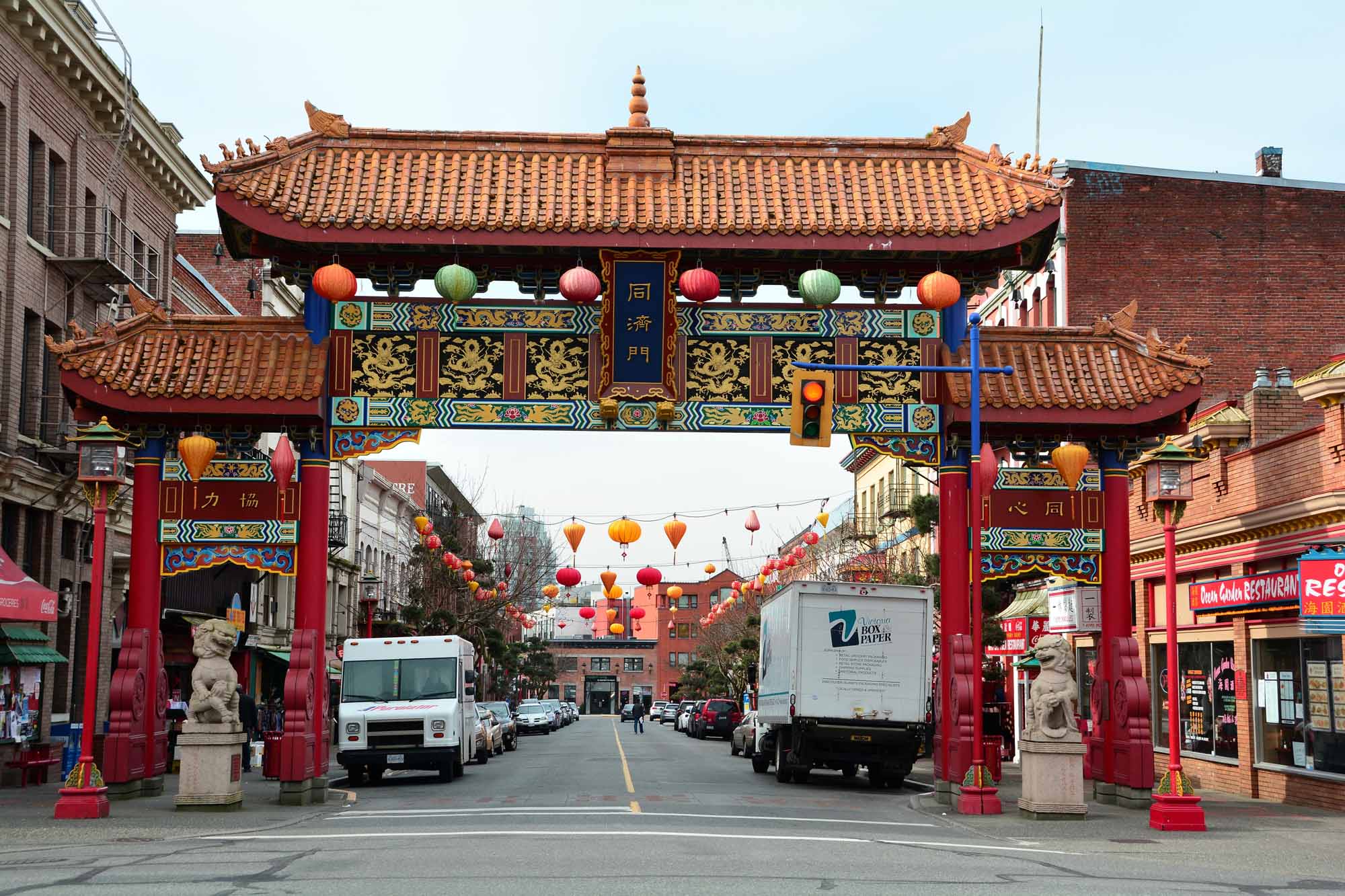Browse "Politics & Law"
-
Macleans
Canada Backsliding on Kyoto Pledges
IT'S A TRUE believer's kind of tale. The day after Canada officially ratified the Kyoto Protocol on CLIMATE CHANGE in December 2002, David Anderson was in New York City to deposit the freshly signed paper with the Treaty Section of the United Nations.This article was originally published in Maclean's Magazine on February 28, 2005
"https://development.thecanadianencyclopedia.ca/images/tce_placeholder.jpg?v=e9dca980c9bdb3aa11e832e7ea94f5d9" // resources/views/front/categories/view.blade.php
https://development.thecanadianencyclopedia.ca/images/tce_placeholder.jpg?v=e9dca980c9bdb3aa11e832e7ea94f5d9
-
Article
Canada-China Relations
Chinese immigration to Canada began with the Fraser River Gold Rush in 1858. Between 1881 and 1885, more than 17,000 Chinese workers helped complete the Canadian Pacific Railway (CPR). Chinese immigrants had to pay an increasingly large “head tax” starting in 1885. Between 1923 and 1947, Chinese immigration to Canada was effectively banned. Canada’s presence in China began with Christian missionary work in the 1890s. Canada and China were allies during the Second World War and adversaries in the Korean War. Canada’s official recognition of the People’s Republic of China (PRC) in October 1970 helped open communist China to the West. Canada then aided China's entry into the United Nations, the World Bank and the International Monetary Fund (IMF). Economic ties and human rights concerns have been hallmarks of the bilateral relationship ever since. More recently, relations have been strained by the Meng Wanzhou Affair and allegations of Chinese interference in Canada’s elections.
"https://d2ttikhf7xbzbs.cloudfront.net/media/media/2ce7ad69-8419-41ff-aa1a-fa4fb45b3717.jpg" // resources/views/front/categories/view.blade.php
https://d2ttikhf7xbzbs.cloudfront.net/media/media/2ce7ad69-8419-41ff-aa1a-fa4fb45b3717.jpg
-
Article
Canada Committee
Canada Committee, a British parliamentary committee established 2 May 1828 to settle political disputes which were paralysing representative government in Lower Canada and creating difficulties in Upper Canada.
"https://development.thecanadianencyclopedia.ca/images/tce_placeholder.jpg?v=e9dca980c9bdb3aa11e832e7ea94f5d9" // resources/views/front/categories/view.blade.php
https://development.thecanadianencyclopedia.ca/images/tce_placeholder.jpg?v=e9dca980c9bdb3aa11e832e7ea94f5d9
-
Article
Canada Company
Canada Company, brainchild of John GALT, established in late 1824 and chartered in 1825 as a land and COLONIZATION COMPANY in Upper Canada. In 1826 the company purchased from the government about 2.5 million acres (1 million ha) of land for $295 000.
"https://d2ttikhf7xbzbs.cloudfront.net/media/media/a03fa073-a395-45c8-a7a3-8ae328595103.jpg" // resources/views/front/categories/view.blade.php
https://d2ttikhf7xbzbs.cloudfront.net/media/media/a03fa073-a395-45c8-a7a3-8ae328595103.jpg
-
Article
Canada Corn Act
Canada Corn Act, passed in 1843 by the British Parliament and applying to all grains, allowed Canadian wheat to enter the British market at a nominal duty, and flour manufactured in Canada at a proportionate rate.
"https://development.thecanadianencyclopedia.ca/images/tce_placeholder.jpg?v=e9dca980c9bdb3aa11e832e7ea94f5d9" // resources/views/front/categories/view.blade.php
https://development.thecanadianencyclopedia.ca/images/tce_placeholder.jpg?v=e9dca980c9bdb3aa11e832e7ea94f5d9
-
Article
Canada East
In 1841, Britain united the colonies of Upper and Lower Canada into the Province of Canada. This was in response to the violent rebellions of 1837–38. The Durham Report (1839) laid out the guidelines to create the new colony with the Act of Union in 1840. The Province of Canada was made up of Canada West (formerly Upper Canada) and Canada East (formerly Lower Canada). The two regions were governed jointly until Confederation in 1867. Canada West then became Ontario and Canada East became Quebec.
"https://d2ttikhf7xbzbs.cloudfront.net/media/new_article_images/PoliticsInOntario/Map_Canada_West_East.jpg" // resources/views/front/categories/view.blade.php
https://d2ttikhf7xbzbs.cloudfront.net/media/new_article_images/PoliticsInOntario/Map_Canada_West_East.jpg
-
Article
Canada First
Canada First, nationalist movement founded 1868 by Ontarians George Denison, Henry Morgan, Charles Mair and William Foster and by Robert Grant Haliburton, a Nova Scotian living in Ottawa.
"https://d2ttikhf7xbzbs.cloudfront.net/media/media/c77c043b-6130-478d-afe6-495c56f807bd.jpg" // resources/views/front/categories/view.blade.php
https://d2ttikhf7xbzbs.cloudfront.net/media/media/c77c043b-6130-478d-afe6-495c56f807bd.jpg
-
Article
Canada House
Canada House, a distinctive symbol of Canadian interests in Britain, located in London's bustling Trafalgar Square.
"https://d2ttikhf7xbzbs.cloudfront.net/media/media/eace665f-b462-4eb7-b033-fa64d5bda978.jpg" // resources/views/front/categories/view.blade.php
https://d2ttikhf7xbzbs.cloudfront.net/media/media/eace665f-b462-4eb7-b033-fa64d5bda978.jpg
-
Macleans
Canada Likely to Join US in War against Iraq
This article was originally published in Maclean’s magazine on September 23, 2002. Partner content is not updated. IT WAS BY MOST ACCOUNTS an uncomfortable meeting when Jean CHRÉTIEN sat down with George W. Bush for 45 minutes in Detroit's Cobo Hall last week.
"https://development.thecanadianencyclopedia.ca/images/tce_placeholder.jpg?v=e9dca980c9bdb3aa11e832e7ea94f5d9" // resources/views/front/categories/view.blade.php
https://development.thecanadianencyclopedia.ca/images/tce_placeholder.jpg?v=e9dca980c9bdb3aa11e832e7ea94f5d9
-
Article
Canada’s Cold War Purge of 2SLGBTQ+ from the Military
For much of its history, the Canadian military had a policy of punishing or purging 2SLGBTQ+ members among their ranks. During the Cold War, the military increased its efforts to identify and remove suspected 2SLGBTQ+ servicemen and women due to expressed concerns about blackmail and national security. In 1992, a court challenge led to the reversal of these discriminatory practices. The federal government officially apologized in 2017.
"https://d2ttikhf7xbzbs.cloudfront.net/media/new_article_images/MichelleDouglas2Image for guide.jpg" // resources/views/front/categories/view.blade.php
https://d2ttikhf7xbzbs.cloudfront.net/media/new_article_images/MichelleDouglas2Image for guide.jpg
-
Article
Canada's Feminist Foreign Policy
In June 2017, Justin Trudeau’s Liberal government introduced its Feminist International Assistance Policy (FIAP). The FIAP takes an explicitly feminist approach to Canada’s foreign policy and international development to target gender equality and the empowerment of women and girls. (See Global Affairs Canada.)
"https://d2ttikhf7xbzbs.cloudfront.net/media/new_article_images/FeministForeignPolicy/fiap-paif.jpg" // resources/views/front/categories/view.blade.php
https://d2ttikhf7xbzbs.cloudfront.net/media/new_article_images/FeministForeignPolicy/fiap-paif.jpg
-
Article
Canada-Third World Relations
The decolonization of the European empires after WWII produced many "new nations" and revealed how little economic and social development the colonial system had permitted its wards. The problem of the "Third World" and its "underdevelopment" was thus placed firmly on the global agenda.
"https://development.thecanadianencyclopedia.ca/images/tce_placeholder.jpg?v=e9dca980c9bdb3aa11e832e7ea94f5d9" // resources/views/front/categories/view.blade.php
https://development.thecanadianencyclopedia.ca/images/tce_placeholder.jpg?v=e9dca980c9bdb3aa11e832e7ea94f5d9
-
Article
Canada-US Auto Pact
The Automotive Products Trade Agreement of 1965, better known as the Canada-US Auto Pact, led to the integration of the Canadian and US auto industries in a shared North American market. While it brought great benefits to Canada, it was eventually found to be contrary to international trade rules and was cancelled in 2001. By then it had accomplished its biggest goal — an integrated North American industry with a much stronger Canadian presence.
"https://d2ttikhf7xbzbs.cloudfront.net/media/media/56003d5b-0a71-405a-8a17-f397815e78a0.jpg" // resources/views/front/categories/view.blade.php
https://d2ttikhf7xbzbs.cloudfront.net/media/media/56003d5b-0a71-405a-8a17-f397815e78a0.jpg
-
Macleans
Canada-U.S. Relations (Poll)
This article was originally published in Maclean’s magazine on 8 March 1999. Partner content is not updated. "The two leaders, who appeared relaxed with one another and frequently made eye contact, also agreed to work together on the mad cow issue.
"https://development.thecanadianencyclopedia.ca/images/tce_placeholder.jpg?v=e9dca980c9bdb3aa11e832e7ea94f5d9" // resources/views/front/categories/view.blade.php
https://development.thecanadianencyclopedia.ca/images/tce_placeholder.jpg?v=e9dca980c9bdb3aa11e832e7ea94f5d9
-
Article
Canada West
In 1841, Britain united the colonies of Upper and Lower Canada into the Province of Canada. This was in response to the violent rebellions of 1837–38. The Durham Report (1839) laid out the guidelines to create the new colony with the Act of Union in 1840. The Province of Canada was made up of Canada West (formerly Upper Canada) and Canada East (formerly Lower Canada). The two regions were governed jointly until Confederation in 1867. Canada West then became Ontario and Canada East became Quebec.
"https://development.thecanadianencyclopedia.ca/images/tce_placeholder.jpg?v=e9dca980c9bdb3aa11e832e7ea94f5d9" // resources/views/front/categories/view.blade.php
https://development.thecanadianencyclopedia.ca/images/tce_placeholder.jpg?v=e9dca980c9bdb3aa11e832e7ea94f5d9
